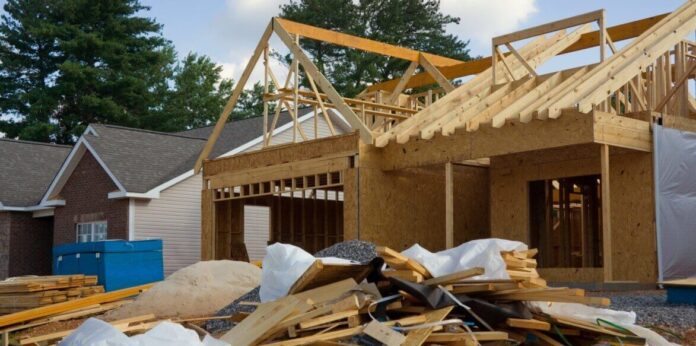Siding is crucial to a home’s exterior, providing protection, insulation, and aesthetic appeal. It serves as a barrier against the elements, enhancing the structure’s durability and energy efficiency. Understanding the different types of siding, installation processes, and maintenance requirements is essential for homeowners looking to improve their property’s appearance and functionality.
Exploring Siding Options: Installation and Maintenance Essentials for Homeowners
1. Types of Siding
Vinyl Siding
Vinyl siding is popular due to its affordability, low maintenance, and versatility. It comes in various colors and styles, mimicking the look of wood, stone, or brick. Installation involves attaching panels to the exterior walls, providing insulation and weather resistance. Routine cleaning with soap and water maintains its appearance, making it a durable and cost-effective choice for many homeowners.
Wood Siding
Wood siding offers a classic, natural look and can be made from cedar, pine, or redwood. It requires more maintenance than vinyl, including periodic painting, staining, or sealing to protect against moisture and pests. While wood siding enhances a home’s aesthetics, it may be susceptible to rot or decay without proper care.
Fiber Cement Siding
Fiber cement siding combines cement, sand, and cellulose fibers, offering durability and fire resistance. It can mimic the appearance of wood, stucco, or stone, providing a high-end look with minimal maintenance. Installation involves attaching individual planks or panels; regular cleaning can prolong its lifespan.
Metal Siding
Metal siding, such as aluminum or steel, is known for its strength, longevity, and resistance to pests and fire. It comes in various finishes and can be painted to match any color scheme. While metal siding is low maintenance, periodic inspections for dents, scratches, or rust are recommended to ensure its integrity.
2. Installation Process
Preparation
Before installing siding, the exterior walls must be prepared by removing old siding, repairing any damage, and ensuring a smooth, even surface. This may involve replacing sheathing or adding insulation for energy efficiency.
Siding Installation
Installation methods vary depending on the type of siding chosen. Vinyl siding is typically attached with nails or clips, while wood siding may require additional steps such as caulking or sealing joints. Fiber cement and metal siding are installed similarly, with panels or planks secured to the walls.
Trim and Accessories
Completing the siding installation involves adding trim pieces, corner caps, and other accessories for a polished look. These elements enhance aesthetics and provide additional protection against moisture and drafts.
3. Maintenance and Care
Regular maintenance is essential to preserve the integrity and appearance of the siding. This includes:
Cleaning
Wash siding annually with a mild detergent and water to remove dirt, grime, and mildew. Avoid using abrasive cleaners or high-pressure washers that could damage the surface.
Inspections
Periodically inspect siding for signs of damage, such as cracks, warping, or moisture infiltration. Prompt repairs can prevent further issues and prolong the siding’s lifespan.
Repairs
Address any damage promptly by replacing damaged panels, sealing joints, or repainting as needed. Ignoring repairs can lead to more extensive damage and costly replacements.
Read also: Home Maintenance Tips that Can Save You Money
4. Advantages of Proper Siding Installation
Proper siding installation offers numerous benefits beyond aesthetic appeal. It enhances your home’s energy efficiency by providing an additional layer of insulation, reducing heat loss in winter and heat gain in summer. This can result in lower energy bills and a more comfortable indoor environment year-round. Additionally, well-installed siding helps prevent moisture intrusion, which can lead to mold, mildew, and structural damage over time. By sealing gaps and ensuring a tight fit, siding installation protects your home from the elements and improves its overall durability.
5. Choosing the Right Siding Contractor
Hiring the right contractor is crucial for a successful outcome when installing or replacing siding. Look for licensed and insured professionals with experience in siding installation and a track record of satisfied customers. Lifetime Exteriors is the premier siding company that will assess your home’s needs, recommend suitable siding options, and provide a detailed estimate of costs and timelines. Communication is critical throughout the project, ensuring transparency, timely updates, and promptly addressing concerns. Investing in a qualified siding contractor ensures quality artistry, adherence to building codes, and peace of mind for homeowners.
6. Future Trends in Siding Technology
As technology advances, the siding industry innovates with new materials, finishes, and sustainability practices. Emerging trends include eco-friendly siding options made from recycled materials or renewable resources, reducing environmental impact while maintaining performance and aesthetics. Innovative siding solutions with integrated insulation, moisture barriers, and energy-efficient features are gaining popularity, enhancing comfort and reducing utility costs. Additionally, digital design tools and 3D modeling allow homeowners to visualize different siding options, colors, and textures before deciding. Keeping abreast of these trends enables homeowners to make informed choices, incorporating cutting-edge siding solutions that meet their needs and preferences while contributing to a greener, more efficient home exterior.
Siding plays a vital role in protecting and enhancing your home’s exterior. By choosing the right type of siding, following proper installation procedures, and maintaining it regularly, you can ensure your home remains beautiful, durable, and energy-efficient for years. Invest time and effort in selecting quality siding materials and hire experienced professionals for installation to maximize the benefits and longevity of your siding investment.


